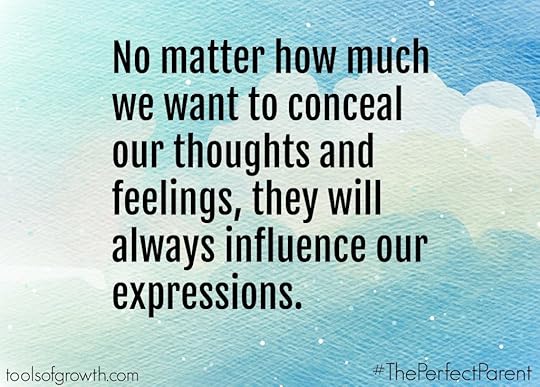Roma Khetarpal's Blog, page 15
June 22, 2017
Signing on to the Family Mobile Minutes Plan
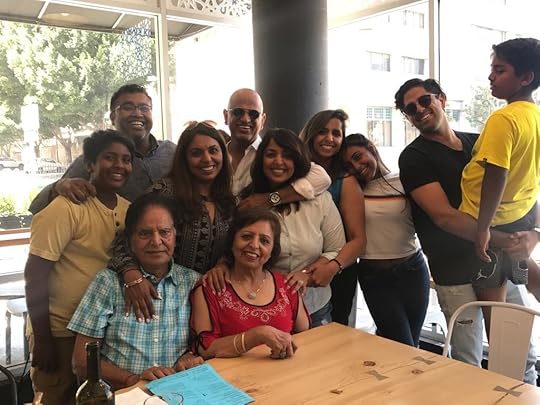
On Father’s Day, I walked into a restaurant where my parents and my sister and her family were waiting. My 13-year-old niece and 12-year-old nephew had their heads buried in their phones. I squeezed them both from behind, and for a few seconds, they turned around and gave me a hug. Then they turned back toward their phones.
I settled in next to my 9-year-old nephew, Dillan, who was sitting in a corner with his head on his arms. My sister pointed to his siblings and explained, “Dillan doesn’t have a phone yet, and he’s upset that his brother and sister get one and he doesn’t.” I understood; I’d feel the same way. This truly is every parent’s issue: You can’t stop the older ones from having a phone, and the little ones are not old enough for them.
I bent over and whispered in Dillan’s ear, “Hey, how are you? I want my hug!” He turned around, hugged me, and returned to his downcast position. But as I looked around, I noticed that everyone except my father and mother had their phones out and they’d fiddle with them as notifications and texts came in.
Suddenly a light bulb went on! On Friday I’d had a conversation about parenting and technology with Josh Ochs of Safe Smart Social, and he’d mentioned that when he had reconnected with a friend over a meal the two of them decided to take a “mobile minute break.” Since they were in the middle of their workday, they set aside one minute every hour to check their phones and attend to any needed business.
That’s it, I thought. Without further planning, I said to Dillan, “Do you want to help me with Family Mobile Minutes?”
What’s that?” he asked, suddenly curious.
“Let’s see if we can get everyone’s attention.” I took my fork, clinked a glass, and said, “May I have everyone’s attention, please?” They all looked up. “Would everyone be open to playing Family Mobile Minutes?”
“What’s that?” the older kids asked.
“We will all put our phones away for an hour. At the end of the hour, Dillan—who will be keeping track of time—will pass the phones to everyone for three minutes so we can all touch base with work or social media. Dillan will time the three minutes, and then he will collect the phones again. This will help us all spend real quality time together with each other and our guest of honor, Grandpa! Is everyone ready?”
Dillan jumped up and grabbed grandma’s big handbag and with her permission to use it as our mobile gadget storage bag, he walked chair to chair, holding the bag out for each phone. My brother-in-law struggled to finish a text, and my niece tried to push it another five minutes, but she finally joined in. Everyone complied, and within minutes, there was laughter and conversation around the table.
A few minutes later, my adult son walked in, looked around, and immediately asked, “No phones?”
“Nope,” said Dillan, who explained Family Mobile Minutes. My son thought it was a cool idea and dropped his phone into grandma’s bag. Then my adult daughter walked in, and though she raised her eyebrows when Dillan told her what we were doing, she, too, said, “I’m in!” Seeing their older cousins participating made the young ones even happier. The energy at the table was amazing, and everyone felt it.
The verdict? “This is actually fun and freeing.”
Here’s what I feel was key to our success:
Delivery is everything: Family Mobile Minutes was explained with a loving and fun tone of voice. No drama, just a simple statement. This is important for avoiding resistance by kids, especially teenagers.
Be all inclusive: Everyone has to put their phones away.
Be creative: My daughter—our family photographer—wanted to catch Grandpa totally focused on the delicious food. She looked at Dillan and pleaded for her phone so she could take a picture. I asked that she wait until the hour was up and reminded her that artistry lies in recreation as much as capturing the moment. When Dillan agreed, she waited.
Have fun: There were many times when someone pretended to sneak into Grandma’s bag, and everyone hollered, “Noooooo!” That just added to the enjoyment.
What came out of this experience was magical. For the first time ever in our family, we were cell-phone free as a group for a total of 3 hours and 48 minutes and on our phones together for a total of 12 minutes in the 4 hours that we were together.
Here are my top six benefits:
A deeper connection: You can’t put a price on this. We were hugging, and my grown children joked a lot about not having their phones, totally entertaining us all.
Stronger communication: There was lots of eye contact, great conversations, and no mobile distractions.
Mindful eating: Everyone thoroughly enjoyed the occasion and had something to say about the fabulous meal we shared at Spread, Mediterranean Kitchen.
More relaxation: The parents of the younger children did not have to ask their kids to put their phones down, which allowed everyone to enjoy their food more.
Positive habits: We all know what has happened to the dining table since cell phones have taken over. This underlined how good it feels not to be bogged down with our devices.
Great role modeling: As parents, we set the stage, and this is terrific behavior to model.
Try it and tell us what you think!!
The post Signing on to the Family Mobile Minutes Plan appeared first on Tools of Growth.
June 16, 2017
Celebrating the Joys of Fatherhood this Father’s Day
Even though most of us moms disagree with the type of fun kids have with their fathers, let’s honestly admit that the silliness, humor and “off limits” things that our kids get to experience with their fathers adds so much joy to our children’s lives. Now that’s worth celebrating, isn’t it?
Happy Father’s Day!
The post Celebrating the Joys of Fatherhood this Father’s Day appeared first on Tools of Growth.
June 14, 2017
The Mother of All Parenting Epidemics – the Preoccupied Mind
Originally posted on Huffington Post.

School pickups and drop-offs. Grocery shopping and healthy meal planning. Science projects, essays, and reading assignments. Sports, dance, martial arts, tutoring. Team parenting responsibilities, volunteer commitments. and play dates. That’s a short list of what’s on many parents’ agendas.
Yes, the demands of parenting are endless, but our need to fill them all is nothing to boast about. Splattered over the internet are articles from trusted resources about alarming “epidemics”: the epidemic of stressed parents raising stressed kids; the prescription pill epidemic; the over-parenting epidemic; the exhaustion epidemic. They all point in one direction: Parental busyness is overwhelming our mental, physical, and emotional wellbeing! How crazy is that! What we should be enjoying, cherishing, and celebrating most ― our children ― is stressing us out the most.
Our kids are not doing this to us. They aren’t saying, “What more can I add to this list to stress out my parents?” Or “I really want to add on four more after-school activities to stress myself out.” No, we are doing this to ourselves, mostly to meet the preconditioned demands of society or to keep up with peer-parent pressure.
Regardless of the source of pressure, however, one thing is clear: A busy schedule busies our minds. A busy mind ignites the need to multitask, and multitasking pulls us out of the moment and throws us either into the past or the future. We are now doing things mechanically ― robotically—with our mind elsewhere.
This is the birth of the “preoccupied” mind, the mother of all parenting epidemics and an addictive habit that we are all guilty of. While we are physically in one task, our mind is lost in thought. A different thought, that is. So while we are doing this, we are thinking about that. We are abstracted, distracted, absent, and absent-minded.
Parents, we are not wired for this. Humans are not wired to thrive ― in the long term ― when we are not present in what we are doing. It might feel like we are accomplishing something in the now, but with the passage of time this continued habit wears us down by disconnecting our minds from the task at hand. In the process we tax our intellect, emotions, and our physical expressions ― how we talk, behave, our tone of voice, and our choice of words. We drain our energy and pile on stress. We then project our “stress” outward. Guess where! Yes, to our kids. Don’t be fooled for a moment that our kids don’t feel the effects of this. Add a preoccupied, disconnected mind to the busyness of life, and we have written a recipe for disaster for both our children and ourselves. It’s no wonder that we are plagued with parenting epidemics.
So what should we do?
1. Mind-watch. Every time your mind moves away from the task at hand ― for example, if you are doing dishes and suddenly you find yourself thinking about your schedule for the next day ― take a deep breath and focus. Remember, the goal is to slowly bring the preoccupied mind back to the task at hand. Visualize a fishing pole, and start reeling your mind back in. When we start to watch our mind in this way, we start to understand our inner nature. Count how many times your mind gets distracted in a matter of five minutes. When I first started to mind-watch, I realized that in a five-minute span, my mind drifted more than 100 times. I wasn’t surprised when, years later, I read research that said the average person thinks more than 50,000 thoughts each day and approximately 35-48 thoughts each minute. So busyness may be in our nature, but if we become busybodies following it everywhere, we will break down at some point. We don’t need science to confirm that for us.
2. Use your senses to un-occupy your preoccupied mind. Our senses help us make sense of things. It is through our five senses that we experience the world around us. When our mind drifts, we disconnect from our senses and lose out on the experience at hand. So if you’re doing dishes, for example, turn your attention ― your mind ― back to the physical contact, the touch of your hands on the dishes. If you are wearing dishwashing gloves, watch and listen to the water flowing from your tap. If your kids are talking to you and your mind is drifting, making eye contact with them will help you not only hear them but also really listen to them. In my book, The “Perfect” Parent: 5 Ways to Use Your Inner Perfection to Connect With Your Kids, I explain this in detail in Sensible (Sense-able) Parenting, which is a key parenting tool.
3. Embrace the world of mindfulness. Parents ask me all the time, “What does being mindful really mean?” Being mindful is simply being aware, conscious, alert, and focused on the task at hand. Being mindful means being present and fully attentive to what we are doing or feeling or experiencing. When we mind-watch and use our senses to un-occupy our preoccupied mind, we become mindful. We start to focus better and experience more of our lives. When we experience more, we start to enjoy what we are doing. When we add joy to our lives, we reduce stress and anxiety and increase our happiness index, which directly affects our self-worth, self-confidence, self-esteem, and self-respect—the antidotes to all-too-common parenting epidemics.
So when you are doing things for and with your kids, make sure your mind is not preoccupied. The more you practice mind-watching, the more you will start to reel back your distracted mind. Sure, as parents, we are busy. We have to get things done. Just make sure your mind is not preoccupied with the weight of random thoughts drifting in and out. What a waste to rob ourselves of experiencing our life and to deplete the precious energy that we can direct toward raising our children. Always keep in mind that as parents our goal should never be to get through the day relieved that the night has come and that we can stop the busy-ness of our mind, but to get to the end of the day with gratitude for the experiences that enrich our lives because of our children. Can you imagine a life without them?
The post The Mother of All Parenting Epidemics – the Preoccupied Mind appeared first on Tools of Growth.
June 3, 2017
Ground this child or buy her ice-cream?
Last week, a friend sent me a link to a Twitter post by a father and author from the
UK by the name of Mason Cross. In his post, he shared his 11-year- old daughter’s
handwritten student feedback. This is what it said.
His post got a cumulative 164,786 retweets, and 532,526 likes on social media,
so his question on what his response to his daughter’s comment—“Not sure if I should
ground her or buy her an ice cream”—got me thinking. Here’s my take.
1. He could ground her if he believed what she said was wrong or disrespectful. But
considering that he is boasting about his smart daughter all over social media (one
of replies says, “She’s 11 going on 47”), that hardly suggests that grounding is in her future.
2. He should buy her an ice cream if she is generally timid and this response is out of
character and he feels she should be rewarded for speaking her mind. If she is
generally bold, however, then rewarding her would only boost her young ego and
encourage her to follow the example that her father is setting on social media: Hey, I
told off my teacher or put her in her place.
What is the mindful, conscious way of handling this?
Start with communication—an open discussion of the one thoughtful response in
her feedback. What is her definition of “collective punishment”? What are some
examples of this at school? How does she relate these incidents of “collective
punishment” to the 1949 Geneva Conventions on war crime? How does she feel
about this?
In the chaos of social media, we, as parents, cannot and should not lose an
opportunity to delve deeper into our children’s intellectual and emotional
understanding and to explore these kinds of responses. Is this child holding some
deep hurt, and was this sentence a way of expressing that? Or is she following her
father’s lead on social media? Let’s ask this young woman to share her views, so that
we can become aware of any changes our school systems need.
We all know that our current traditional school systems are just that —traditional.
Certainly we are ready for an update. As Sir Ken Robinson, one of the world’s
foremost thought leaders on our education system, says, “The fact is that given the
challenges we face, education doesn’t need to be reformed—it needs to be
transformed.”
I couldn’t agree more. If we want to transform our educational system, we should
start by asking children like Ms. Cross what they feel needs to be changed.
One thing that stands out for me is the use of the should-be- outdated term
“punishment.” Isn’t that word used for criminals? How about replacing it with the
more mindful term “consequence”?
What are you thoughts on this? Would love to hear them!
The post Ground this child or buy her ice-cream? appeared first on Tools of Growth.
May 25, 2017
Are You Dealing with the Feelings?!
(An excerpt from The Perfect Parent…)
When my son was in the fourth grade, a friend shared some horror
stories about her child’s experience with a certain fifth-grade teacher.
Naturally, this created an impression in my mind, and alarm bells
rang when I found out the following year that my son would be in
this teacher’s class. Suddenly I was besieged by negative emotions and
fears. But there was no other option, because there was no other class
available. I did not want to taint my son’s thoughts and feelings about
this teacher, however. So almost every day I would beat around the
bush, trying to gauge his opinion by asking him some indirect ques-
tion: “How is Miss X?” I would ask. Or, “Is she a good teacher?” “Is
she nice?” “Do you understand what she is teaching?”
A month into the school year, my son asked if I had met Miss X
yet. “No,” I answered. “So how come you don’t like her?” my
smarty-pants wondered.
No matter how much we want to conceal our thoughts and feel-
ings, they will always influence our expressions. We can’t help it.
Our thoughts and feelings are intertwined with our comments and our
actions. Together they can help us move forward—or they can push
us backward. But if we sort out and lighten the weight of those feel-
ings, we can shift from thinking negatively to thinking positively.
This will guide us in responding positively as well, which will bring
communication back into balance.
My son had seen right through my doubts and reservations about
Miss X. The next day, however, I came up with a great idea: I called a
close family friend who also taught at that school and casually asked,
“What do you think of Miss X?” Her response? “She’s a great teacher.
Very experienced, very patient. Both my kids have been in her class. If
Navin has her, he’ll do well. It’s a good fit.”
This was the opposite of what I heard before, and it was information that
came from a trusted source—information that could have saved me a great
deal of worrying. Why hadn’t I thought to call that friend earlier? Because I
was too wrapped up in my emotions to think clearly! So then, what made me
call her now?
I had turned to that wonderfully effective tool: Dealing with the Feeling.
In his research on emotional intelligence, Dr. Daniel Goleman has
written that the emotional brain responds to an event more quickly
than our thinking brain. It is obvious, then, that in order to think
clearly and make decisions, we need to manage our emotions when
they overtake us unexpectedly. Dealing with the Feeling lets us do
just that.
How do you deal with the feelings? Learn more on Roma’s previous blog article
on the subject.
Want to find out more? You can purchase The Perfect Parent by Roma Khetarpal
on Amazon to discover more ways of dealing with the feeling!
The post Are You Dealing with the Feelings?! appeared first on Tools of Growth.
May 21, 2017
The Motherhood Evolution with Suzi Lula – Part 2
In Part 1 of my interview with Suzi Lula, we talked about her philosophy of The Motherhood Evolution. We hope you enjoy Part 2 as well.
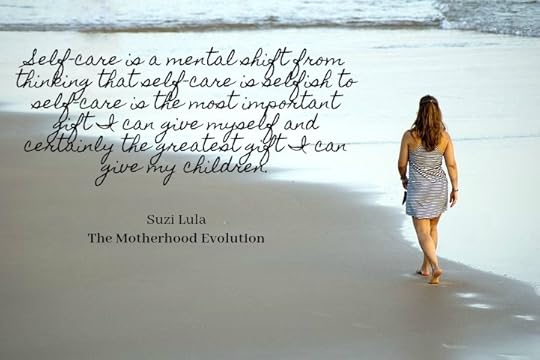
1. Our wellness is directly affected by our relationships and the personalities of our children. We all know that. So how can we hold our own through challenging times with partners and kids? Is it even possible?
This is “the” question, isn’t it, Roma? One of the reasons that self-care is so important to commit and dedicate ourselves to on a daily basis and as a way of life is that we practice it on the days when we aren’t challenged with our children so that we have the bandwidth when we are challenged….because life will bring us situations and challenges to learn through and grow through. Self-care is the technology that creates the inner bandwidth to weather the “storms” that life will bring us as mothers with our children. Self-care allows us to be the “calm in the storm,” and isn’t this what we want and what our children want from us?
2. In the United States alone, approximately 600,000 women are affected by postpartum depression every year. What can pregnant women and new moms do to reduce that statistic?
That’s such an important question, Roma, and I’m so glad you asked it. Rarely does a day go by that I don’t encounter a mother who feels depressed, exhausted, disconnected, hormonal, someone who’s experiencing postpartum depression.
Yes, we can absolutely eradicate it. It starts by talking about it. Postpartum depression carries with it a veil of shame. Our culture teaches us that motherhood is supposed to look shiny, with the image of a white-picket fence, 2.5 kids, and the right car in the driveway. We don’t talk about anything “shadowy.”
But it’s time to take postpartum depression and the shadow side of motherhood out of the closet where we have neatly tucked it away. Only then can we take away its power.
One of the tenets of my work with self-care is to remove all sense of shame on the physical, mental, emotional, and spiritual level.
3. Many of us are wearing both pants and skirts today. We are career driven yet try to look pretty while taking care of our kids and homes. Being spread so thin contributes to the lack of mothers paying attention to self-care, don’t you think?
“Wearing both pants and skirts today!” This is so true, Roma! This absolutely contributes the issue. And it goes deeper as well.
We value the doing, the activity, the tasks of motherhood over our being, our essence, our spirit, our presence. We value what we do over who we are.
We have been taught to value the cleaning of our house and the promotion and salary of a job over the quality of our life. Not that both aren’t important. They are.
When we learn to value our being over our doing (which comes from a self=care practice), then the “me” that I bring when I put on my skirt or my pants is a richer me, a more connected me, a more fulfilled me, a more joyful, fun, inspired, purposeful, thriving me! And I bring that rich quality of being to what I’m “doing.” This is what our children want to feel from us!
Also, we think that there’s not enough time in a day to practice self-care. In this way of being, we are then operating from a place of lack: not enough time, not enough support, not enough patience. We then are constantly telling our children, “Hurry up to get out to the door. Hurry up and brush your teeth. Hurry up and get to bed. Hurry up.” This is teaching them lack.
But the practice of self-care actually does the opposite. It takes us from a paradigm of lack into a paradigm of abundance. When we take 15 minutes or 30 minutes to truly nourish our spirit, time expands: Our heart expands, our patience expands, our peace expands, our vibration elevates, and the me I bring into the rest of my day, or the me I bring into my relationship with my son, is completely different. I am a different individual! This is why self-care is priceless to me. There’s no price tag I can put on myself when I am thriving and my son feels this coming from me.
The payoff I get from 20 minutes is exponential. Self-care is a portal that moves us from a place of lack to a place of abundance.
This cultivates a healthy sense of self-esteem, because when we take the time to nourish our bodies, our emotions, and our dreams, it feels good.
(As a side note, I absolutely believe that self-care will end all bullying. That’s another entire article and interview, I know! But when we as mothers “feel good” about ourselves, we develop a healthy sense of self-esteem. We model this to our children, and our children feel good about who they are. An individual who feels good about themselves doesn’t bully.)
4. You call your mission a movement. Do you feel The Motherhood Evolution is like global new-age women’s movements in any way?
Yes, I believe it is a new movement based on “ancient wisdom” teachings. The teachings of indigenous cultures that say connection, relationship, and quality of life are the most important things we are all seeking. We have such a short time with our children… let’s make it count
Mothers, women, innately have the gift of nurturing, connection, and peacemaking, and our gifts have been overshadowed and discarded in a widely masculine society. It’s time for women and mothers to value our feminine power and even more importantly our spiritual power.
I say that mothers are the untapped spiritual powerhouse on the planet right now. Just think of the moment you met your child for the first time. Think of this connection that you would die for. This is spiritual power, and our time is now to step fully into it. Think of what we’re passing on to our children and how we’re affecting the next seven generation on the planet.
5. You say that “self-care isn’t for the faint of heart.” I totally agree! So how can women who find it challenging to take care of themselves make their first steps in that direction?
Taking the time to slice an avocado, taking the time to cultivate spiritual practices that truly nourish us, learning the language of self-compassion… there’s nothing more important than creating a relationship with yourself that is connected, peaceful, self-accepting. It takes courage to do this in the midst of all that we have to do as mothers for our children: the laundry, dinner, working, taking them to gymnastics, dance, piano, violin, and so on.
We teach people how to treat us. Cultivating the courage to say to your family and friends, “I am committed and dedicated to caring for myself first” teaches others that it’s good for both of us.
I call it mutuality. It’s mutually beneficial. If I’m caring for myself and am fulfilled, I have an overflow of energy, vitality, bandwidth, inspiration, for those around me. This is good for me, and this is also good for my children. It’s mutually beneficial. When I am fulfilled from the inside, it will always be mutually beneficial for those around me. When I feel good in my own skin, when I learn what my needs are, how to ask for what I need, when I learn about boundaries, and I feel good, and I walk into a room, everyone feels how good I feel. Without saying a word, they feel good because I feel good.
Self-care is a mental shift from thinking that self-care is selfish to self-care is the most important gift I can give myself and certainly the greatest gift I can give my children.
We want to belong, so often we don’t want to be the first one in our group to say that I believe in taking care of myself first, I don’t feel guilty at all! So, that’s why I’m saying it for everyone! Your children will thank you for it!
So how can we take the first step?
Mothers set the spiritual tone in the home. To start, we want to take many, simple, easy doable steps. This starts with reprioritizing.
When my son was young, I became very clear that cleaning my house was secondary to my mood and the tone in my home. So I would forego cleaning and put on a piece of music and dance, light candles, take breaks, cut fresh flowers. I invested in the tone of my home, taking a moment for myself, and modeling this to my son. Every mother is looking for her “pause,” and the best thing to do when we need that pause is to show our children how to de-escalate: Go to a chair, take a few deep breaths, de-escalate.
This is a practice, a process, and it takes time and investment, but the results are priceless!
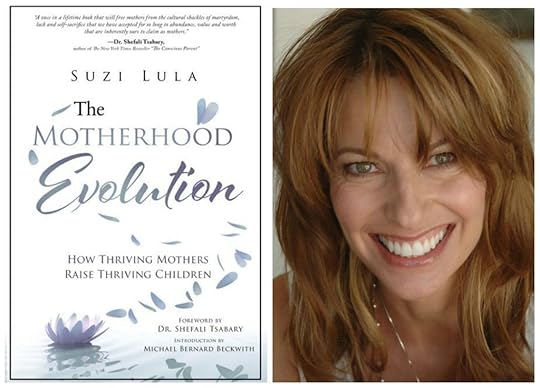
Learn more about The Motherhood Evolution at www.SuziLula.com.
The post The Motherhood Evolution with Suzi Lula – Part 2 appeared first on Tools of Growth.
May 12, 2017
A Mother’s Day Gift For Your Kids

As Moms, we all have to constantly be creative with how to address our children’s complaints about why they don’t have certain things others have. In this new-age era of positive psychology, child development experts strongly recommend keeping a “Gratitude Journal” as a great way to remind children to be thankful and to draw their attention to what they DO have. This helps in shifting their focus away from complaining and towards feeling grateful and GOOD about themselves.
Well, here’s another creative TOG that can beautifully draw a child’s attention to feeling good… a WISH JOURNAL… a journal where children (and parents) can write down their wishes, not for themselves but for others. For example, if your child is complaining about not having anyone to play with because his sister has a fever, you can encourage your child to write a wish for his sister in your family wish journal (or you can write it for him if he is too young to write): “I wish my sister feels better soon so we can go outside and play again.”
So this Mother’s Day, why not shake it up. When your kids give you their gift/token of love, how about giving back to your kids the gift of a WISH JOURNAL! It will be your way of thanking them for being in your life while guiding them to wish well for those around them.
Here’s what the contents of a family’s WISH JOURNAL might look like in just a couple of days:
1. Spotting a frowning neighbor, let’s send a good wish their way by writing:
I wish our neighbor starts smiling more.
2. Losing a favorite book:
I wish Sarah finds her favorite Harry Potter book soon.
3. Your niece is waiting to hear back about her college admissions:
I wish my cousin, Jen, gets into her dream school.
You get the picture! The idea is to expand a child’s emotional state from “me” to “we.” Developing this habit will naturally lead children to a place of positive wishing and positive feeling, raising the level of our own serotonin (feel-good hormones).
Interestingly enough, as adults, most of us do this daily anyway, at least in conversation, but we use the word “hope” instead. For example, I hope Sarah finds her book OR I hope Jen gets into UCLA, etc. A WISH JOURNAL just takes it to the next level by putting it down in writing. Here are but a few advantages of cultivating this family communication habit:
1. Encourages children to write their feelings, nurturing Emotional Intelligence.
2. Teaches children to always “wish” the best for everyone as they do for themselves, nurturing empathy.
3. Helps children to think positive about negative feelings or situations, nurturing happiness.
What a great way to celebrate Mother’s Day and Raise Kids to Be happy, Think Positive and Do Good!
The post A Mother’s Day Gift For Your Kids appeared first on Tools of Growth.
May 1, 2017
Is There a Roadmap to an Effective Apology?
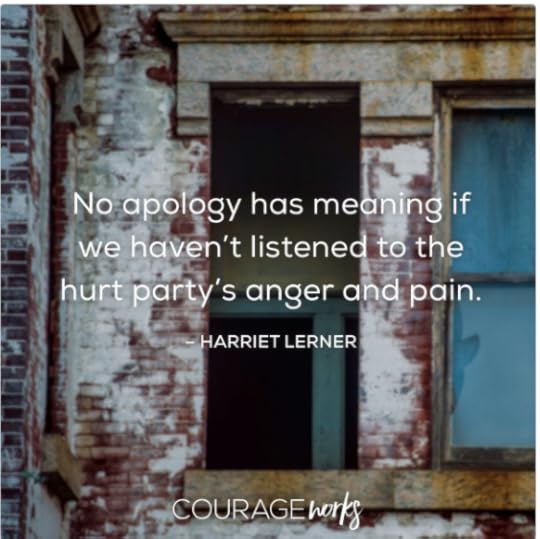
Photo courtesy of CourageWorks.
A few weeks ago, my 26-year-old son (who helps manage our family business, which is about 5 miles from our house) stopped by to grab a quick lunch. Since he does not live at home anymore, I popped into the kitchen from my home office to spend a few treasured minutes with him. We started discussing something, and suddenly the two of us were in a verbal fender-bender, with him holding strongly onto his opinion, and me very sure about mine. I was in the middle of a sentence, when he started walking out of the house.
I didn’t want him leaving while he was upset, so kindly, with a good intention, I calmly said, “I’m sorry that we don’t agree on this, but I really believe that you need to listen more open-mindedly. We can discuss this, but if you want to walk away, it’s your choice.” When I heard the garage door close, I knew that he was not ready to talk any more. But I felt I had done my part; I had even apologized!
That evening over dinner, my husband said to me, “You know your son is upset at you.”
“I know,” I said. “We’ll talk about it tomorrow or when he’s ready. It’s not a big deal. It was a minor disagreement.”
“Well, you’re not going to like what he said to me,” said my husband.
“And what was that?” I asked, somewhat sarcastic.
“He said, ‘How come Mom never apologizes?’”
My heart sank! “What? I’m the queen of apologies,” I said.
“That’s what I told him: ‘Mom always says she’s sorry when she’s wrong. Always!’ To which he responded, ‘She might say she’s sorry, but I don’t think she means it.’”
That threw me into a tailspin! Why would I say I was sorry if I didn’t mean it?
This was weighing heavily on my mind. After all, I teach mindful parenting, and encouraging parents to apologize is an important part of what I advocate. So why did my son feel this way! After taking a few minutes to quiet my unsettled emotions, I called my son.
“But I apologized, love,” I said, defending myself.
“Sure,” he replied. “You said you were sorry, but you said it as if it were still my fault.”
We eventually sorted things out, but I just couldn’t get the argument out of my mind. Obviously he didn’t feel my apology. How could I have said it differently?
We’ve all experienced this kind of bafflement: We apologize, but the volcano continues to erupt. I knew I had to explore this some more.
I got caught up in other things over the next days. Then a good friend of mine sent me this link based on Harriet Lerner’s book, Why Won’t You Apologize. I was thrilled! This e-course just happened to be based on one of my favorite author’s work and hosted on one of the most respected growth platforms, Brené Brown’s Courageworks.
There’s an old saying: “When you yearn for something from the core of your being, the entire Universe aligns itself to manifest it for you.” Yes, this was definitely for me. So I jumped in head first, and in just five lessons, I emerged as a much wiser apologizer! At the same time I decided to read Harriet’s book, which gave me some valuable added insights.
The course begins by touching on the three gifts of a heartfelt apology:
A gift to the person we hurt: A heartfelt apology makes them feel soothed and calmed, releases them from repetitive obsessive anger, allows them to feel safe and comfortable in the relationship, makes them feel that they matter, validates the hurt party’s sense of reality, and sends a message that I get it, I screwed up.
A gift to self: A heartfelt apology makes us feel more respected and able to grow in resilience, happiness, maturity, and integrity.
A gift to the relationship: A heartfelt apology affects our intimacy, deepens our connection, communication, and joint growth.
It’s hard to hold your heart in your hands. You have to actually get ready to face your shame, vulnerability, guilt, and remorse. This course outlined the steps to do that through easy, day-to-day examples and role-playing.
In one lesson, Harriet and Brené discussed a topic dear to my heart: Why kids don’t learn to apologize. The answer is because parents haven’t modeled that behavior. It is important for all of us to learn the Nine Essential Ingredients to a “true” apology. My two favorites are:
# 5. A true apology doesn’t get caught up in who’s more to blame or who started it.
#8. A true apology should not be offered to make you feel better if it risks making the hurt party feel worse.
The latter particularly resonated with me because I always followed my apologies with the reason why I did what I did.
Clearly, I’m not sharing all the essentials I learned, because I really want you to take this life-changing course!
Paired with apology challenges and worksheet questions, this course covered a lot of ground in a simple and heartwarming way. It offered deep perspectives not just on how to give an apology but also on how to receive one. As I practiced the tools, I came to agree completely with Brené’s words: Apologizing is a function of self-respect and self-worth. There is an art to a giving an effective apology and to receiving one.
I can’t tell you how much this e-course meant to me. I truly believe it’s is a must for all of us. So sign up now! And let me know what you think. Register HERE.
The post Is There a Roadmap to an Effective Apology? appeared first on Tools of Growth.
April 25, 2017
Overcoming Judgement in South Asian Families
This post was originally published on Masalamommas.com.

I’m not sure if this just a South Asian thing, but it’s definitely worth talking about. I was at an 80th birthday party where three generations were present. At the beginning, I sat down for a while with my mother-in-law and her friends. They happened to be talking about the honoree’s new granddaughter-in-law, Mita.
As Mita toasted her grand-mother-in-law, I overheard one of the women at the table say, “Well, this one knows how to trap a good guy. He’s handsome, has a good family, is intelligent and rich.” I curled my lips but just nodded my head as my inner voice screamed, “Really, ladies, what old-fashioned thinking! So not nice.”
A few minutes later lunch was served, and I went back to my table of 50-somethings where my husband and friends were sitting. Mita stopped at our table to thank us all for coming to the party. But as soon as she walked away, one of my tablemates said, “Well, she sure knows how to pick ‘em. She landed a good one. He was the most eligible boy in our community, and she snatched him! I really don’t know what he saw in her though.” She giggled with the woman next to her.
After the cake was served, I went to say hello to my son and daughter and their friends, all in their mid-20s to early 30s, who were having some lively conversations. As I strolled among them, I talked, listened, and learned. In 30 minutes, I heard from these millennials about technology, science, and politics. So refreshing I thought to myself!
Why can’t we all discuss topics like these? I wish I could drag some older folks into this corner and shake them up by saying, “Here’s a world of topics we can socialize over instead of making innocent Mita the target of negative comments. I had found out that the girl, who moved from Canada, had hosted the party as a way of getting to know the community that her husband had grown up in.
The next group of youngsters was discussing online dating. My own kids had told me about this new world. In fact, recently, to answer some of my questions, my daughter made me listen to Aziz Ansari’s new audiobook, Modern Romance.
“Well, that’s how Mita met Shaan,” said one young woman.
“Are you kidding?” asked another, adding, “Do you know what site they met on, ‘cause she totally scored! Some women just know how to throw themselves at guys. I’m not like that at all.”
“Do you know Mita personally?” I asked.
“Well kinda,” she said, walking away.
I later pulled my daughter aside and asked if that girl knew Mita, and my daughter said, “No, Mom. We’re all meeting Mita for the first time today. You know they got married in Europe and very few of us made it to the wedding.”
I was cringing by then. (Read more on Masalamommas.com)
The post Overcoming Judgement in South Asian Families appeared first on Tools of Growth.
April 11, 2017
How Can We Be Grateful When We Complain So Much?
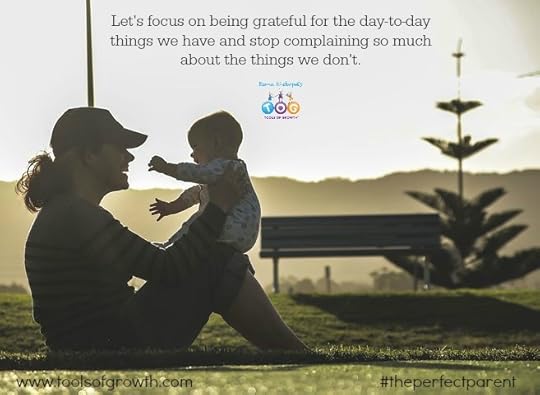
“I know I have a good husband. He’s a good dad and provider, and my kids are all healthy. Really, I’m grateful for my life, but I can’t help but notice how work always comes first to my husband, next come the kids, and I’m last! He walks in the door, kisses the kids, then walks over to me. If he’s with the kids and the phone rings, he tries not to answer it or walks into another room, but when we are together, he answers his work calls and keeps talking, as if I’m not even there. I don’t get attention from him anymore, and I’m getting resentful about it,” said Becky, frowning, during a consultation session.
“Okay, close your eyes for a few minutes, and take two deep breaths. Now use your imagination, and tell me what would make you happy in that scenario. Describe the steps that you envision. Take your time. Think of different options, and tell me what would resonate with you most. What would make you really happy?”
Almost five minutes later, Becky opened her eyes and stared blankly at me as big tears rolled down her cheeks. “I wouldn’t change a thing,” she said. “This is perfect.” We both sat silently for a few minutes while she gathered herself together. “I first imagined him walking in the door, right past the kids,” she went on, “to give me a hug and kiss. That made me smile. Then I saw my eight-year-old’s sad face as he whispered to my six-year-old, ‘Dad never hugs us first.’ And my six-year-old added, ‘That’s because he loves Mommy more.’ That made me teary-eyed, and I even thought how dumb of my husband not to hug and kiss the kids first. I love that he doesn’t answer the phone when he’s with the kids. But now that I think about it, when we’re together, he only answers the phone when it’s important. And when he does, he’ll always share what’s going on and even ask my opinion. What is wrong with me, Roma? Why didn’t I see this on my own? I’m a really grateful person. Why do I do this to myself when I’m truly grateful for my life?”
We all have had conflicted moments like these—where our mind plays games with us, and we’re unable to see things clearly. On the one hand, we are grateful, and on the other, we complain and mope. Why?
Certainly, we are living in an age in which expressing gratitude is advocated with full force. All around us we hear: Be grateful, count your blessings, say thank you, know how lucky you are. Research tells us that gratitude changes our brain, our sleep patterns, and our well-being, and it benefits our health.
So yes, we are more conscious of expressing our gratitude, but we do it by looking at the larger context of our lives. For example, I have a faithful husband, my kids are healthy, and I get to stay home to be with my kids. I have a roof over my head, food on the table, and so on.
But here’s the catch: Research also tells us (and social media supports it) that we are complaining more than ever before. Just as gratitude rewires your brain positively, a recent study at Stanford suggests that complaining rewires your brain negatively!
And that is also affecting our kids, who mirror our behavior. If we complain, so will they.
So why this dichotomy? Why do we complain even if we’re grateful? In my opinion, it’s because we are not expressing gratitude for the day-to-day stuff. What we need to add to our lives is a focus on expressing gratitude specifically! So the question is how?
1. Catch yourself complaining. Complaining has a snowball effect. Once we start we cannot stop. Becoming aware of complaining is the very first step.
Pay attention to when you complain. Catch yourself. Close your eyes and revisit the situation. Then in your mind’s eye, create a new vision with the issue resolved. Ask yourself if the complaining is worth it or not. Dr. Guy Winch, the author of The Squeaky Wheel, says, “As a society, we complain too much, but more importantly we don’t complain effectively. We’ve lost a sense of what complaining is for; instead, we use it as an exercise for venting and that has consequences.” Next…
2. Start naming your blessings in this particular issue. Better yet, start writing them down. I’m talking about breaking your gratitude list down to the tiny gifts of life. Take a deep breath as you enumerate each one. Bring the feeling of gratitude into your heart space. Next…
3. Sit with this feeling and follow your breath. With your eyes closed or open, follow your breath, and deposit it into every cell of your body. Start putting it in your feet, then your legs, all the way up your spine, to the crown of your head. This is how we are able not only to rewire our brain but also uplift the quality of our own lives and those that we touch—most importantly, our children. It is through such grateful, graceful meditation that we can turn off negativity and become upstanding parents raising upstanding children.
PS: When you catch your kids complaining, take them through the very same exercise.
The post How Can We Be Grateful When We Complain So Much? appeared first on Tools of Growth.


